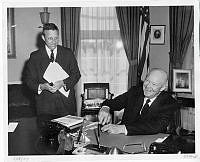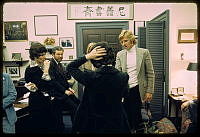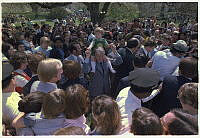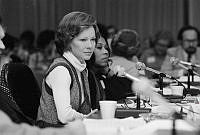John Tyler

Born to an affluent family on March 29, 1790, John Tyler spent most of his life in Charles City County, Virginia. He was raised on the Tyler family plantation, Greenway, and lived there until he attended the College of William & Mary, graduating in 1807. He then prepared for a career in law, studying with his father John Tyler, Sr., and Edmund Randolph, former United States Attorney General. After marrying Letitia Christian in 1813, John purchased a tract of land in Charles City County and built his own plantation, Woodburn, shortly thereafter.
According to the 1820 census, there were twenty-four enslaved people living at Woodburn with the Tylers, some of whom were inherited from his father’s estate. Ten years later, the Tyler household had grown exponentially from three to seven children, ranging in age from fifteen-year-old Mary to newborn Tazewell. The enslaved community had grown as well—twenty-nine individuals, and more than half were under the age of ten. Click here to learn more about the enslaved households of President John Tyler.
Throughout the 1820s and 1830s, Tyler held a series of prominent political positions at both the state and national level. While he considered himself a Democrat, he sometimes opposed President Andrew Jackson’s policies—specifically whenever the president opted to use executive power at the expense of the states. In 1839, the Whig Party nominated William Henry Harrison for president. Tyler, a Virginian slave owner and lifelong Democrat, was added to the ticket to entice southerners to vote for Harrison—who soundly defeated President Van Buren. “Tippecanoe and Tyler Too” became the oft-repeated slogan of their supporters, but this relationship changed dramatically after the unexpected death of President Harrison on April 4, 1841.
Vice President Tyler took the oath of office with Harrison’s cabinet present and assumed all presidential authority immediately, but the new president quickly found himself at odds with leaders in the Whig Party. His veto of legislation that would revive the Second Bank of the United States sparked a visceral reaction from both politicians and citizens alike. The Whig Party cast Tyler out and most of his cabinet resigned over this episode; at the same time, his Democratic friends no longer trusted him. Considering the political turmoil that engulfed his presidency—his detractors had also successfully nicknamed him “His Accidency”—it was hardly surprising when neither party selected Tyler to be its presidential nominee in 1848. A few days before leaving office, Tyler signed legislation to annex Texas—an expansionist policy goal he had pursued since becoming president and probably his most notable achievement.
In 1842, Tyler suffered the loss of his beloved wife Letitia to a stroke. Over the course of three decades of marriage, the couple had raised eight children. Two years later, the president married Julia Gardiner in New York. After leaving the White House, they retired to Sherwood Plantation in Charles City County, Virginia, where they had seven children together.
On the eve of the Civil War, former President Tyler served as a representative at the Peace Conference of 1861 but ultimately rejected the proposed resolutions. He would go on to serve as an elected representative for the Confederacy, but he did not live to see the end of the war. On January 18, 1862, he died in Richmond, Virginia at age 71. While he had requested a simple burial, political leaders of the Confederacy organized a state funeral for the former president. His remains laid in state in the Hall of Congress in Richmond, covered “with the flag of his country.” Memorial services were held at St. Paul’s Episcopal Church, followed by a procession to Hollywood Cemetery.





































